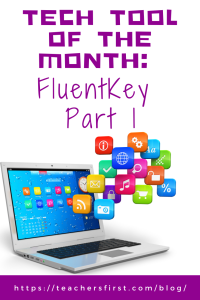FluentKey is a game-based learning interactive that uses video clips to engage students of all ages. The videos are designed to enrich world language learners and improve students’ listening comprehension skills. FluentKey offers learning activities in 14 languages (including American Sign Language, Arabic, Chinese, Japanese, Italian, Russian, Spanish, and Hebrew) and is also ideal for English language learners. The videos ask participants questions related to the video’s content in a game-based format.
To begin, teachers create a free account, add classes and students, then assign games that can be completed live as a class or assigned as homework for asynchronous work. Live games display the video on the teacher’s screen for the entire class to view together while the individual questions appear on the students’ devices and screens. Teachers can choose the video’s length, difficulty level, and theme and view a transcript to see the content before assigning the lesson to students. You can also upload videos and create quizzes or games. Students don’t need to register to use this site—they input the code that the teacher provides, and FluentKey automatically assigns a screen name that can be changed to their initials, student number, or whatever else they prefer.
Applying the Triple E Framework
The Triple E Framework, created by Dr. Liz Kolb, believes that “effective technology integration begins with good instructional strategies and not fancy tools” (tripleeframework.com). Dr. Kolb wrote a book on the topic, Learning First, Technology Second (ISTE, 2017), that lays out the three main uses for technology in education: to Engage, Enhance, or Extend learning goals. We can use this framework to decipher why we use specific classroom tools. Here is a rubric based on the Triple E Framework you can use to evaluate whether FluentKey (or any other technology) is a good fit with your learning goals and whether you should use it in your lesson.
- Engage in learning goals: FluentKey motivates students to begin learning by allowing them to complete listening comprehension questions through videos and game-based learning activities. FluentKey helps students focus on content and learning goals, as there are no advertisements or other distractions.
- Enhance learning goals: FluentKey creates paths for students to demonstrate their understanding of the learning goals in a way that would be impossible without technology. For example, students can click and collaborate when completing the listening comprehension games.
- Extend learning goals: Dr. Kolb describes extended learning as an opportunity for students to learn, connect, and collaborate outside the regular school day and bridge the school day and real-life experiences. This tool would work well on virtual learning days when students complete a live game together. The activities on FluentKey would also make an ideal asynchronous learning experience if assigned as homework and would work as a remote, flipped, or blended learning activity.
SAMR Connection
The SAMR Model, by Dr. Ruben Puentedura, suggests that technology implementation has four levels. Therefore, we can use this model as a guideline to analyze how we use technology tools in the classroom. FluentKey can be used at the substitution and augmentation levels.
- Substitution: The substitution level is the most basic level of SAMR and refers to when technology acts as a direct substitute without any functional improvements. An easy example is if students watch the video on this site instead of listening to the teacher read the story.
- Augmentation: At the level of augmentation, the technology acts as a direct substitute and includes some functional improvements. FluentKey allows students to replay the video or use the dial to slow the speech and allows teachers to differentiate between the various difficulty levels.
Take advantage of Part 2 of the Tech Tool of the Month: FluentKey, where we’ll discuss using the tool and classroom ideas. In the meantime, let us know how you have used FluentKey in your education setting in the comment section below.


